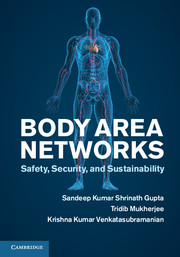Book contents
1 - Introduction
Published online by Cambridge University Press: 05 April 2013
Summary
A healthy populace is essential for societal prosperity and well-being. This makes healthcare a basic societal necessity. Most societies endeavor to provide it in some form, usually in an organized manner through a system of medical facilities that are either private or public, or both. The current mode of delivering care relies on the patient initiating the care-delivery process. Figure 1.1 illustrates this model. It is a four-step process and requires the patient to observe the presence of specific symptoms, and visit a caregiver, who then diagnoses the problem and provides a treatment. We call this the traditional model of care delivery. The principal characteristic of the traditional model is that it is reactive in nature. No action is taken to improve the patient's condition unless the patient initiates the process. A problem with this approach is that it is inherently defensive in nature in fighting illness. This is particularly problematic if the symptoms for the patient's ailments seem benign or manifest late in the progression of the disease.
Additionally, the traditional model has other problems as well, especially those associated with scale. The whole model of care was designed for a society where the number of people requiring care was a very small percentage of the population. However, with the dramatic demographic shift taking place in the world, especially that associated with aging, the traditional model of care delivery will be a huge bottleneck.
- Type
- Chapter
- Information
- Body Area NetworksSafety, Security, and Sustainability, pp. 1 - 8Publisher: Cambridge University PressPrint publication year: 2013



